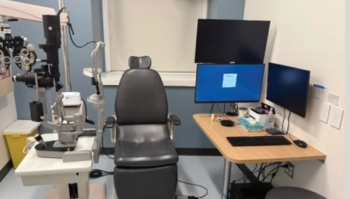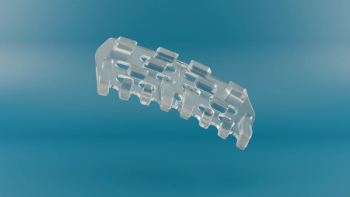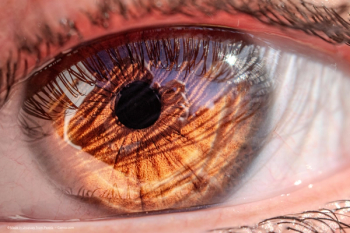
Surgical iridotomy safer than YAG in younger uveitis patients
A retrospective study concludes that surgical peripheral iridotomy (PI) has several advantages over laser treatment in some patients with uveitis.
A retrospective study concludes that surgical peripheral iridotomy (PI) has several advantages over laser treatment in some patients with uveitis.
Glaucoma can complicate uveitis. Synechial adhesion can form between the uveitic iris and lens, resulting in seclusio pupillae and iris bombe. Aqueous flow becomes obstructed, inducing a secondary angle closure, elevating intraocular pressure, and sometimes forming peripheral anterior synechiae and leading to rapid progression of glaucomatous optic neuropathy (GON).
Clinicians often address this secondary angle closure with PI, using either a neodymium:yttrium-aluminium-garnet (Nd:YAG) laser or through conventional surgery, but the failure rate is high.
Iridotomy data
To investigate the risk factors for failure, Thomas David Betts of Christchurch Hospital, New Zealand, and colleagues studied data obtained from the Auckland District Health Board on patients who had been operated on between 1 January 2008 and 31 December 2018. Findings were published in the British Journal of Ophthalmology.
The sample consisted of 131 iridotomies performed in 52 eyes belonging to 39 subjects. Of the iridotomies studied, 111 were YAG PIs while 20 were surgical PIs. Of the surgical iridotomies, four were performed as the primary intervention, while the remaining 16 were performed after a failed YAG. None of the patients had pre-existing cases of GON.
Surgical PIs had a number of advantages over YAG PIs. Median survival time was 11 years for surgical PI versus only 70 days for YAG PI. Median survival time for YAG PI performed on an iris bombe was even worse, coming in at only 35 days, while it remained constant with surgical PI at 11 years.
On the other hand, median survival time for a YAG PI for primary angle closure was quite high at 16.3 years. Meaningful data on the survival time for a surgical PI of this type was unavailable since only one such surgery was performed which did not fail in the follow-up period.
Age-related effects
Researchers also observed that younger patients had a higher risk of failed PIs. They found that for each increase in age of 10 years, there was a reduction in risk of failure of 49.8%.
They postulated that this may be due to overly vigorous wound healing and inflammation. Given the higher rate of success for surgical PIs over YAG PIs, researchers recommended that clinicians default to surgical PIs when treating uveitis in younger patients.
Researchers also observed that while there was no statistically significant link between high rates of failure and high inflammation at the time of the PI (p = 0.159), high inflammation in the month following the PI was associated with high rates of failure (p = 0.033). This confirmed the importance of post-operative inflammation management.
Researchers also observed high rates of GON in the cases surveyed, with over a third (nineteen; 36.5%) of the eyes included in the survey developing it. Most (thirteen) of these eyes required glaucoma surgery.
Despite surgical intervention, seven of the eyes that developed GON (36.8% of eyes with GON and 13.5% of the overall sample) lost vision. Because of the high risk of GON, researchers recommended that, “all subjects with uveitis that require a PI should be co-managed between uveitis and glaucoma specialists to optimise control of inflammation and to ensure close monitoring of their angle and optic nerve.”
Despite the relatively small sample size, this remains the largest survey comparing the effectiveness of surgical versus YAG PIs, and the researchers are hopeful that the findings will help clinicians better manage the care of iris bombes and younger uveitis patients.
Newsletter
Get the essential updates shaping the future of pharma manufacturing and compliance—subscribe today to Pharmaceutical Technology and never miss a breakthrough.










































